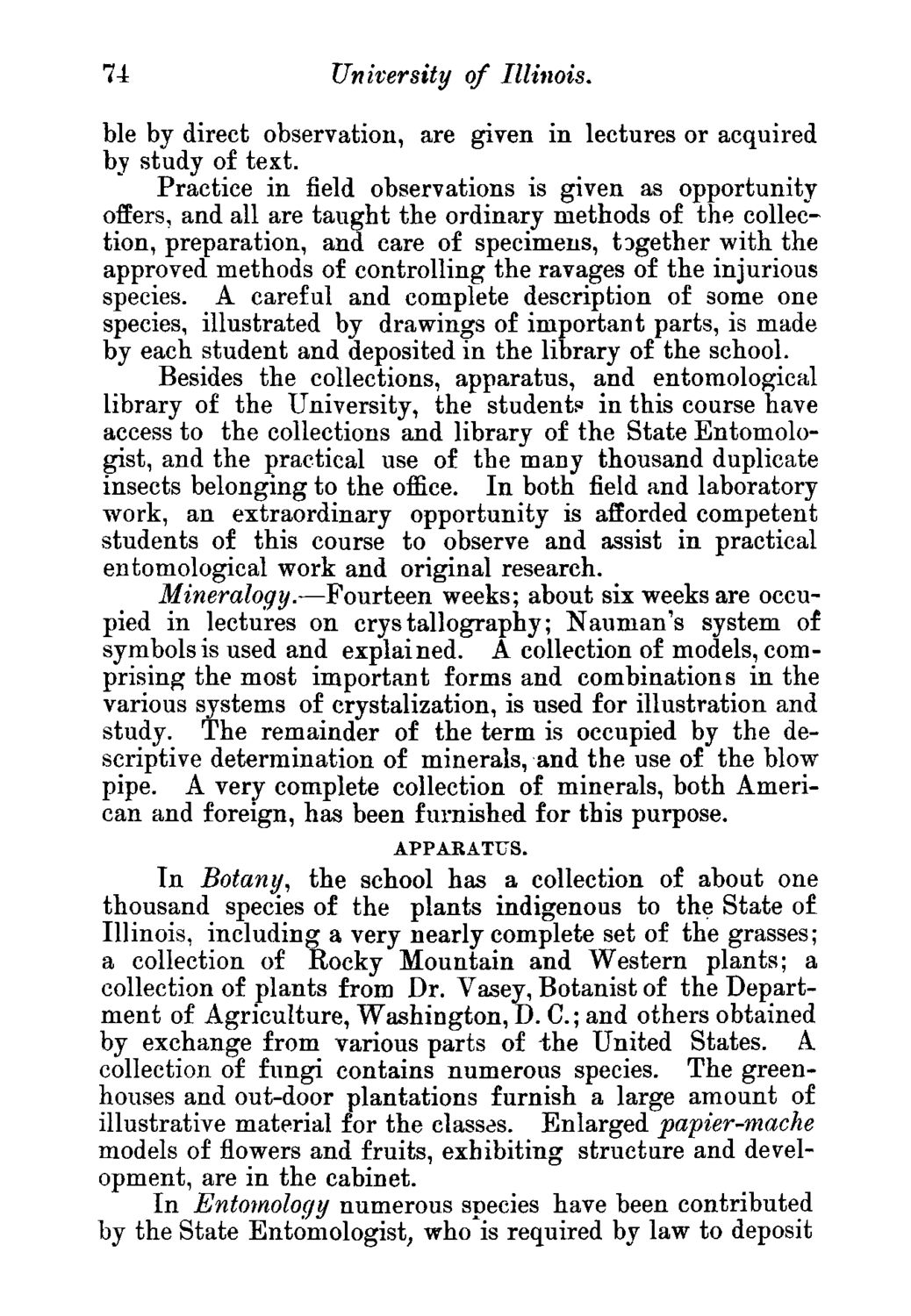| |
| |
Caption: Course Catalog - 1886-1887
This is a reduced-resolution page image for fast online browsing.

EXTRACTED TEXT FROM PAGE:
74 University of Illinois. ble by direct observation, are given in lectures or acquired by study of text. Practice in field observations is given as opportunity offers, and all are taught the ordinary methods of the collection, preparation, and care of specimens, together with the approved methods of controlling the ravages of the injurious species. A careful and complete description of some one species, illustrated by drawings of important parts, is made by each student and deposited in the library of the school. Besides the collections, apparatus, and entomological library of the University, the student? in this course have access to the collections and library of the State Entomologist, and the practical use of the many thousand duplicate insects belonging to the office. In both field and laboratory work, an extraordinary opportunity is afforded competent students of this course to observe and assist in practical entomological work and original research. Mineralogy.—Fourteen weeks; about six weeks are occupied in lectures on crystallography; Nauman's system of symbols is used and explained. A collection of models, comprising the most important forms and combinations in the various systems of crystalization, is used for illustration and study. The remainder of the term is occupied by the descriptive determination of minerals, and the use of the blow pipe. A very complete collection of minerals, both American and foreign, has been furnished for this purpose. APPARATUS. In Botany, the school has a collection of about one thousand species of the plants indigenous to the State of Illinois, including a very nearly complete set of the grasses; a collection of Rocky Mountain and Western plants; a collection of plants from Dr. Vasey, Botanist of the Department of Agriculture, Washington, D. C.; and others obtained by exchange from various parts of -the United States. A collection of fungi contains numerous species. The greenhouses and out-door plantations furnish a large amount of illustrative material for the classes. Enlarged papier-mache models of flowers and fruits, exhibiting structure and development, are in the cabinet. In Entomology numerous species have been contributed by the State Entomologist, who is required by law to deposit
| |